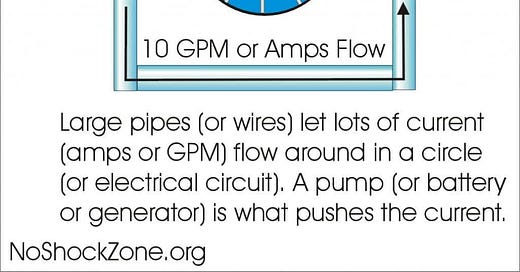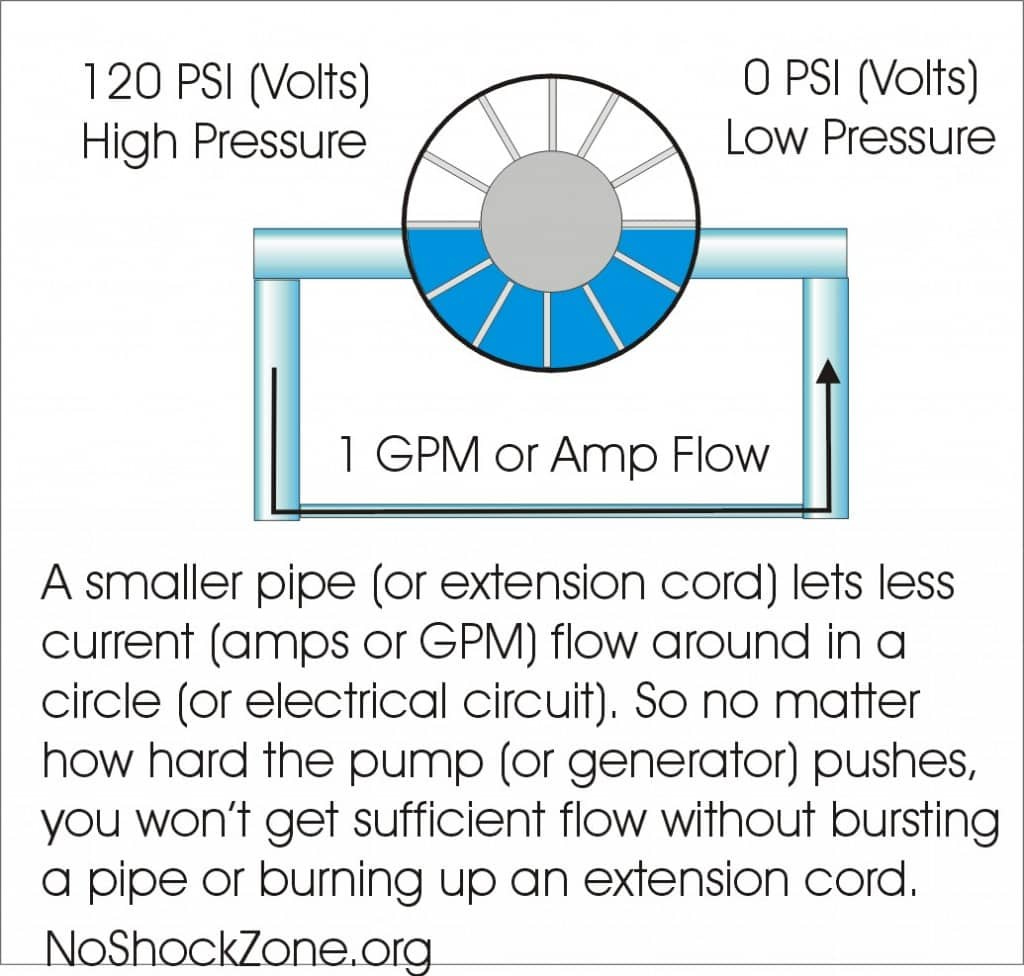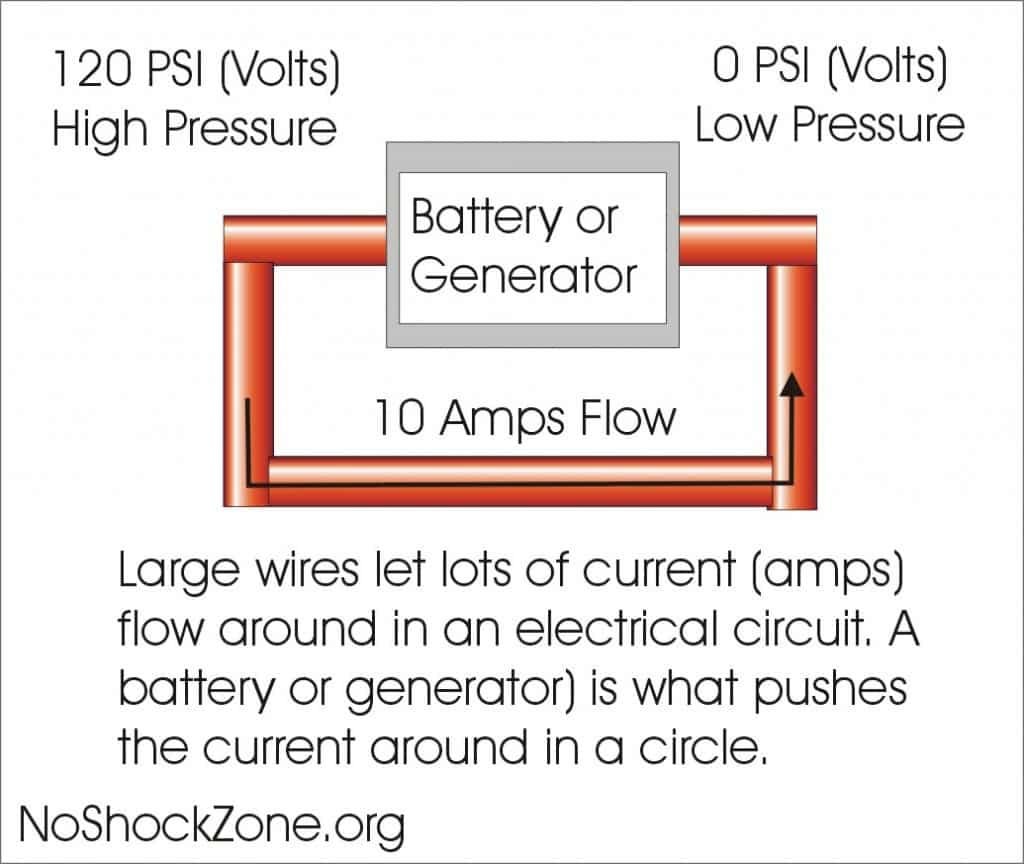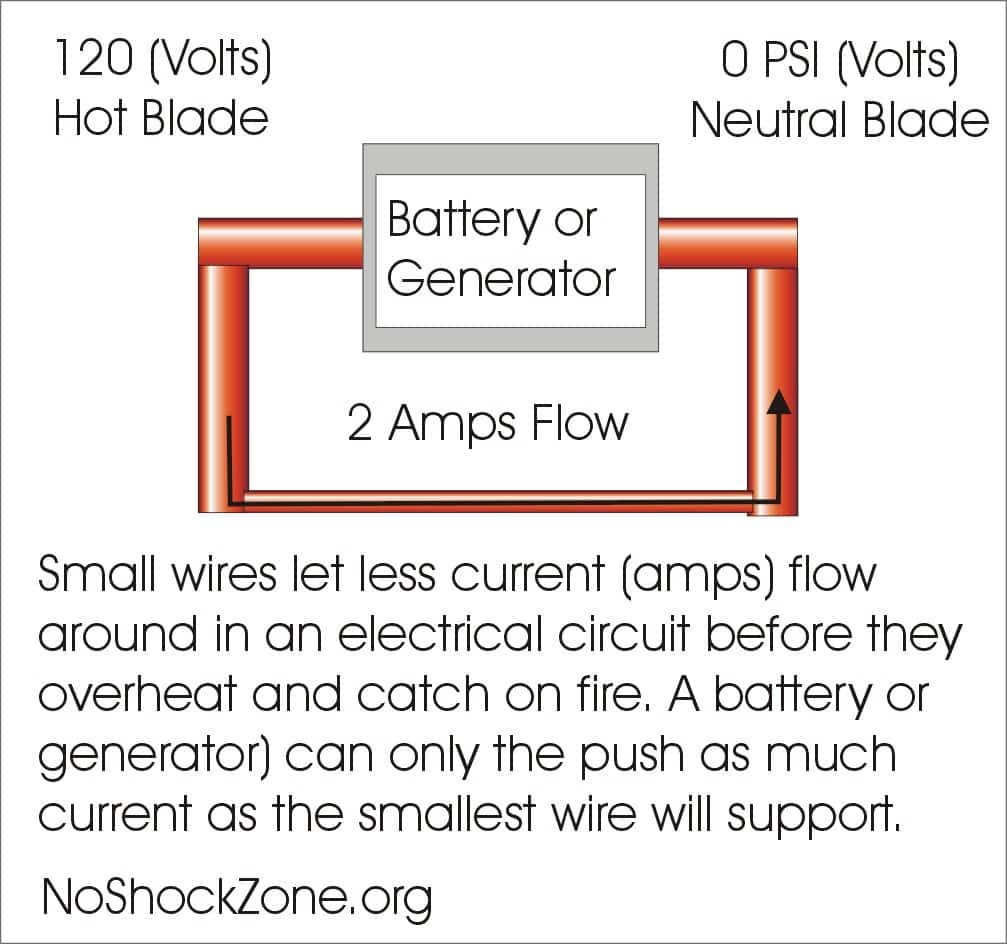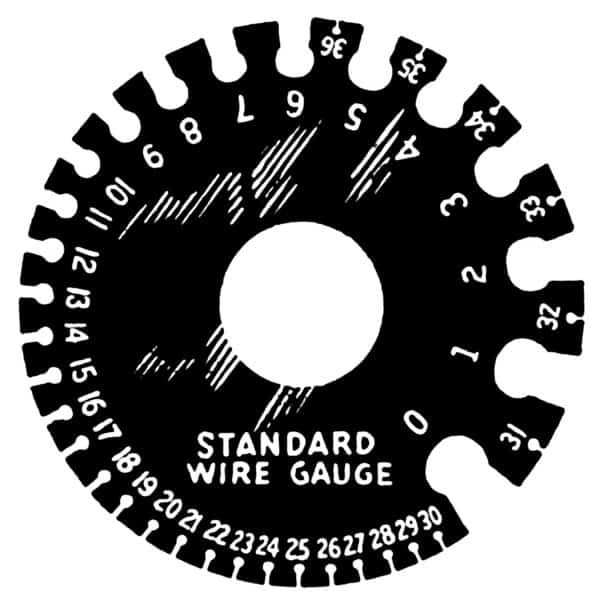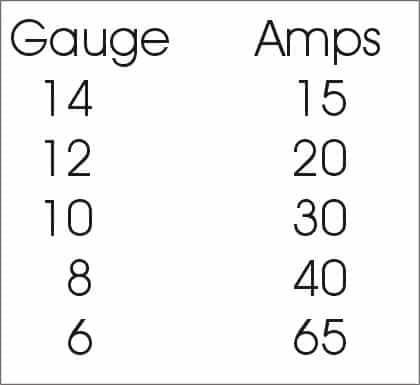RV Electrical Safety: Part 5 - Amperes
You need to learn the basics of voltage and amperage to make sense of electricity
What’s an ampere?
Besides being the name of the guy (André-Marie Ampère) who discovered that current flow caused electromagnetism, it’s the measure of how many electrons are flowing through a wire or conductor per second. For those who are counting that would be exactly 6.24151 × 1,000,000,000,000,000,000 (10 to the 18th power) electrons per second per ampere of current.
However, the actual electron count isn’t important, so you can just think of it as gallons of electrons per minute, using our water tank model [illustrated in earlier articles in this series]. And, yes, we call this effect “current,” both when talking about the flow of water in a river as well as the flow of electrons in a wire. Pretty cool, eh? It’s often abbreviated as “amps” and you’ll sometimes see it listed in milliamps (1/1,000 of an amp) on voltmeters. It takes 1,000 milliamps to equal 1 amp of current.
Pumps and hoses
If you look at the illustration below you’ll see a turbine pump pushing water counterclockwise around in a circle.
And depending on the pressure produced by the pump and the size of the water pipes connecting around in the circle, you’ll either pump a lot of gallons per minute (GPM) or a few gallons per minute.
In this case we’re using a pump that can produce 120 psi (pounds per square inch) of pressure to move water around a pathway or circuit. And because we have a large diameter pipe all around, this circuit can support a lot of current flow without losing much energy or pressure in the process.
Small hoses
As you can see from the next illustration, if you use a very narrow pipe for part of this circuit, your gallons per minute (GPM) flow will be very low.
So if you have a pump that might be able to push 10 gallons per minute through a big pipe, it could be restricted to perhaps 1 GPM flow if you use too narrow of a pipe for any part of the circuit.
And just like the garden hose you use to water the plants in the back yard, it won’t be able to deliver enough water flow if it’s too small in diameter or too long in length. The exact same thing happens to electricity as it flows through a wire like an extension cord. Just like pipes, thick extension cords can support lots of current flow, while skinny extension cords can only support a small current flow.
Big wires
Take a look at the illustration of the electrical circuit below. Instead of a pump, let’s substitute a battery or AC generator, and instead of a pipe let’s use a wire going around in a circle, which we’ll call a circuit (just like a horse racing circuit).
If the wire being used is large enough in diameter, then the generator or battery can push the full 10 amperes around through the circuit without any loss, which is the typical amount of current your coffee pot might require to heat up water. And as long as you don’t try to push more amperes of current through a wire than it’s rated for, then all should be fine.
Little wires
However, the exact same generator or battery could be in trouble when attempting to push those 10 amperes of current through a skinny wire or extension cord. Now your generator might only be able to push 2 amps of current through the circuit since there’s so much resistance to flow built into the smaller wires (think pipes).
And while you will certainly notice a significant drop in water flow from your garden hose if it’s a bit too skinny for the job, you may not notice the problem you’ll have from a small extension cord when it’s supporting a lot of current flow. And that can cause all sorts of problems with your RV.
That’s because instead of just restricting the water flow in a hose, electrical wires can heat up to the point of catching on fire if you try to push more current through them than they’re rated for. Ever lay your hand on an extension cord and felt it was hot? That’s the problem with too much current: It causes heat. How much current is OK to run through an extension cord? Well, glad you asked.
Size me up
For those of you unfamiliar with extension cord and wire specifications, the lower the number of the gauge, the thicker the wire and the more current (amperage) that can flow through it without overheating. Sort of like shotgun gauges.
For example, a 14-gauge extension cord might be rated for only 15 amperes of current flow, while a 10-gauge extension cord could be rated for 30 amperes of current, depending on total length of the cable and type of insulation. And if you exceed the rated amperage capacity of an extension cord, then you’re asking for trouble.
(FYI: If you want a gauge tester for yourself, you’ll need to order one from Amazon since the big box stores won’t know what you’re talking about. Here’s what I use: General Tools 20 American Standard Wire Round Gauge.
More on this in a future article, but here’s the basic AC amperage capacities of AWG [American Wire Gauge; standardized U.S. wire gauge system] standard wire sizes. As you can see from the chart, the lower the gauge, the larger the diameter of the wire and the more current it can carry without overheating.
Also, it’s often noted that you should make the wire one size larger than called for in the chart if you’ll be running a long distance. NOTE: 50 or 100 feet of extension cord from the campsite pedestal to your RV is a very long distance. Do not expect a 12-gauge extension cord to carry a full 20 amps of current without voltage drop over 50 feet or more. In that case, go to a 10-gauge cable to handle the current over that distance.
You can see that if you want to hook up to a 240-volt receptacle with a 50-amp circuit breaker, you’ll need a 6-gauge extension cord if you’ll be drawing current from the outlet at maximum capacity. And you know you will because RVs are power hungry with microwaves, air conditioners, flat screen televisions, coffee makers and all sorts of other electrical appliances. Using a cable with sufficient amperage capacity will also minimize your voltage drop, which can cause some electronic devices to misbehave.
Voltage Drop?
Did I say “voltage drop”? I’m sure you’ve heard of it, but how many of you know what it really means? Well, that sounds like a good subject for the next article. So stick around while we continue learning about RV electricity and how to stay safe while using it.
Quick Tips
Extension cords can heat up and catch on fire if you exceed their amperage rating by drawing too much current.
The lower the gauge number (AWG) on an extension cord or wire, the more current it can safely carry without overheating.
Electricity needs a complete circuit for current to flow from the high voltage side to the low voltage side of the generator or battery. That current is measured in amperes.
Future Shock
Part 6 of this series will cover how amperage draw causes voltage drop, which is why your coffee pot can cause your lights to dim in your RV. Stay tuned…

